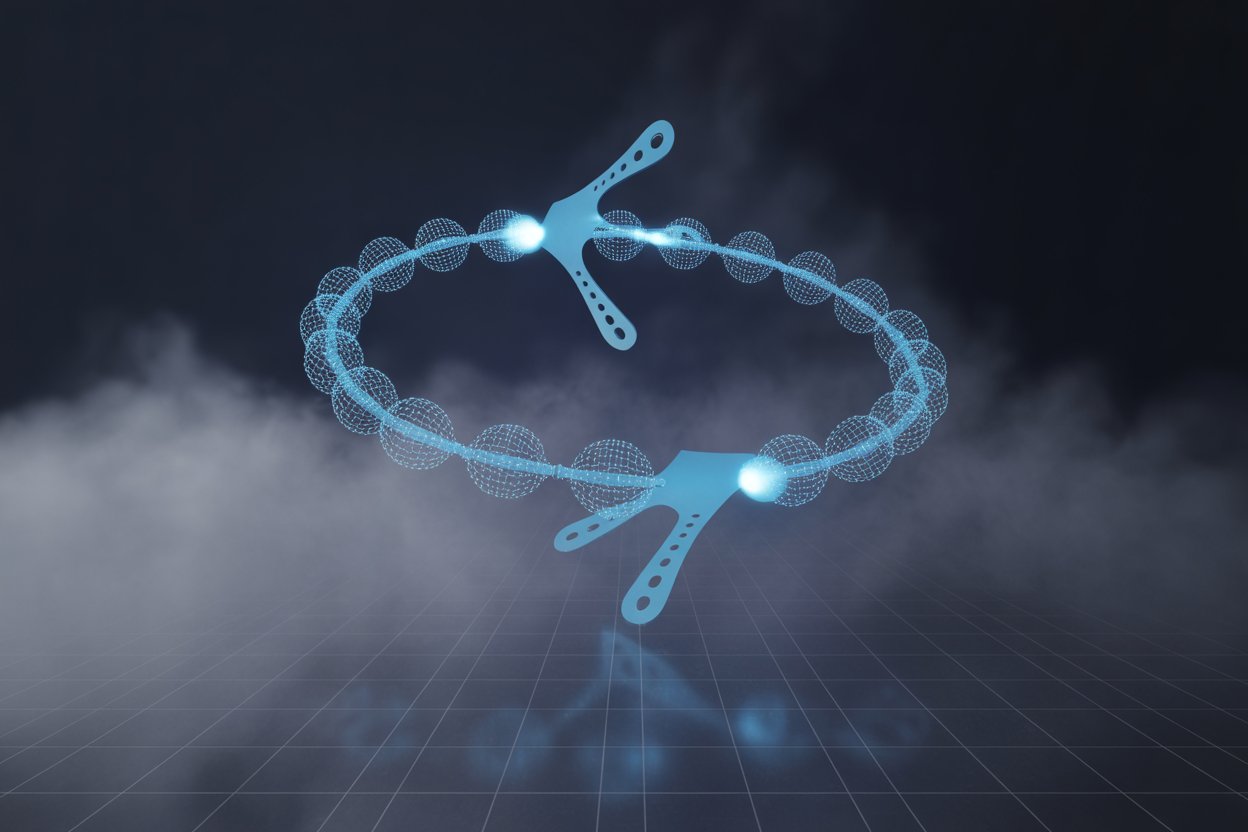Georgia’s AI Framework: A Three-Year Strategy to Transform the Courts
While courtrooms nationwide grappled with AI-generated fake citations and ChatGPT malpractice, Georgia’s judiciary built something less dramatic but more durable: a framework for working with the technology rather than banning it.
Keep the Human in the Loop
The announcement arrived in October 2024, nestled between autumn bar conferences and election season noise. Chief Justice Michael P. Boggs established the Judicial Council of Georgia Ad Hoc Committee on Artificial Intelligence and the Courts, a 16-member body tasked with answering a question most jurisdictions preferred to avoid: How do courts absorb a technology that writes like lawyers but reasons like nothing at all?
The timing carried intention, not coincidence. Courts across the country were wrestling with generative AI’s chaotic debut in legal practice: fabricated citations in New York, ChatGPT-inflated fee requests in Manhattan federal court, standing orders proliferating like kudzu after each new embarrassment.
Georgia chose structured deliberation over reactive prohibition, infrastructure over emergency.
Architects of Oversight
Justice Andrew A. Pinson chairs the committee, a choice that broadcasts strategic thinking rather than administrative convenience. Former Solicitor General, Supreme Court clerk to Clarence Thomas, appellate specialist who argued water rights cases and defended Georgia’s legal architecture in federal circuits. The résumé speaks to someone fluent in both doctrinal precision and the operational reality of implementing policy across a fragmented court system.
Judge Stephen D. Kelley of Glynn County Superior Court serves as vice chair. The full roster reads like a deliberate cross-section of Georgia’s judicial ecosystem: appellate judges who write the precedent, trial judges who apply the rules, prosecutors and public defenders who live in the procedural trenches, court clerks who maintain the machinery, administrators who manage the budgets. The State Bar of Georgia runs a parallel committee under attorney Darrell Sutton’s leadership, creating a feedback loop between bench and bar that mirrors how legal technology actually diffuses through a profession.
The National Center for State Courts partnered with the committee from inception, offering something Georgia couldn’t build alone: institutional memory. NCSC’s managing director worked directly with Pinson’s team, surveying governance frameworks already tested in other jurisdictions, translating lessons about what worked, what failed, and what remained contested across dozens of state court systems. The partnership converted a solo venture into comparative institutional analysis.
Ten Months, Three Years, One Framework
The committee convened its first meeting October 23, 2024, in the Nathan Deal Judicial Center. By July 3, 2025, the group delivered its report: “Artificial Intelligence and Georgia’s Courts,” a document that refuses the certainty most policy papers pretend to offer.
The report acknowledges something courts rarely admit in public: velocity outpacing understanding. During the committee’s 10-month deliberation, the technological landscape shifted beneath them. Indiana rolled out AI voice-to-text transcription. Arizona deployed AI avatars to announce Supreme Court rulings. A Georgia family used generative AI to resurrect their deceased relative’s voice for a victim impact statement during a road rage trial’s sentencing phase, collapsing the boundary between memorial and evidence in ways no procedural rule anticipated.
Rather than declare premature victory or issue edicts that would calcify before implementation, the committee proposed a three-year implementation arc. Year one focuses on leadership structures and governance frameworks. Year two brings community engagement, process reviews, and pilot programs. Year three codifies policy and embeds new rules into court operations. Education and training thread through all three phases, recognizing that competency can’t be mandated without capacity-building.
Green Light, Red Light, Yellow Caution
The report sorts use cases into three categories, refusing the false comfort of binary thinking that has paralyzed other jurisdictions into either wholesale adoption or blanket prohibition.
Acceptable uses: Research assistance, scheduling optimization, administrative workflow automation. The mundane machinery that doesn’t touch adjudication, the back-office functions where efficiency gains compound without threatening judicial independence or due process.
Unacceptable uses: Jury selection algorithms that encode historical bias into digital form, black box sentencing tools that substitute computational opacity for reasoned judgment. Any system that obscures human reasoning behind layers of matrix multiplication and weighted parameters qualifies for this category, regardless of its statistical performance.
Requires further study: Real-time language translation in multilingual proceedings, risk assessment instruments that inform but don’t determine bail decisions, certain sentencing applications where AI augments rather than replaces judicial discretion. The gray zone where benefits and harms remain contested, where pilot programs and empirical evaluation must precede systemic adoption.
The State Bar’s concurrent report, released in June 2025, emphasized that competency obligations can’t remain frozen in amber while technology evolves. Georgia lawyers must understand the tools they deploy, not at the level of source code, but at the level of capability, limitation, and failure mode. Rule amendments addressing AI proficiency, the Bar concluded, weren’t optional courtesies but “particularly critical” professional obligations.
Why Georgia’s Approach Matters
Most jurisdictions respond to AI crises after they metastasize, issuing standing orders that require disclosure, certification, human review: reactive patchwork that treats symptoms rather than redesigning systems. These interventions function as circuit breakers, emergency switches that prevent immediate catastrophe but don’t rewire the electrical infrastructure.
Georgia built that infrastructure before the emergency arrived. The committee’s work acknowledges a principle often ignored in technology policy: governance frameworks need lead time. Institutions metabolize change slowly, not because of incompetence but because integration requires translating abstract capabilities into concrete procedures, training personnel who span five decades of professional formation, and building consensus across constituencies with competing interests. Three years isn’t excess caution when viewed against that reality; the timeline matches institutional metabolism to technological acceleration.
Justice Pinson’s committee identified the core tension in a single sentence: “Many of the opportunities and threats associated with AI are unknown at this point.” That acknowledgment of epistemic humility justifies the entire exercise. Courts function best when operating from known law applied to established facts. AI disrupts both categories simultaneously—the tools themselves remain opaque even to their creators, and their effects on legal practice emerge faster than doctrine can respond. Courts don’t regulate well when surprised, and surprise becomes inevitable when deployment precedes understanding.
The partnership with NCSC matters structurally. State courts often reinvent solutions others already tested, wasting resources and repeating failures that neighboring jurisdictions documented years earlier. Georgia accessed institutional knowledge spanning dozens of state systems, learning from Indiana’s transcription experiments and Arizona’s avatar deployments, avoiding both naive adoption and reflexive prohibition. The collaboration converted what could have been isolated institutional invention into comparative analysis backed by empirical observation.
What Comes Next
Implementation unfolds over the next two years, the unglamorous work of translating framework into practice. Committees become policies. Policies become rules. Rules become daily practice across Georgia’s court system, where technology adoption varies widely—some courts still rely on fax machines while others pilot digital evidence systems.
The test isn’t whether Georgia prevents every AI misuse; no framework can promise immunity from human error compounded by algorithmic acceleration. The test is whether the judiciary maintains explanatory authority over its own decision-making while absorbing technological change, whether judges can still articulate why they reached a particular conclusion without deferring to systems they can’t interrogate.
Other states will watch Georgia’s experiment with varying degrees of attention and anxiety. Some will copy the phased approach, adapting the three-tier framework to their own procedural architectures. Others will declare the timeline too cautious, the categories too rigid, the entire exercise an overreaction to tools that pose less threat than their critics claim. Both responses miss the deeper accomplishment: Georgia established a repeatable process for evaluating tools that didn’t exist when most court rules were written, a method for institutional learning that doesn’t require crisis to trigger action.
That’s governance, not futurism. And in 2025, when the gap between what technology can do and what institutions can absorb widens daily, building the machinery for measured response might be the most forward-looking thing a court can do. Georgia didn’t solve the AI problem. No single jurisdiction could. But the state created the conditions for solving it—structured inquiry, cross-institutional collaboration, epistemic humility about unknowns, and enough lead time for implementation to become integration rather than improvisation.
The timing aligns Georgia’s work with broader national efforts. NCSC released its “AI Readiness for the State Courts” framework in September 2025, providing a roadmap for courts across the AI maturity spectrum: from institutions just beginning to consider adoption to those already implementing pilot programs. Georgia’s three-year timeline positions the state to benefit from these evolving national standards while its committee’s findings inform the broader conversation about judicial AI governance.
Sources
- Georgia Supreme Court: Judicial Council AI Committee Submits Report
- Georgia Supreme Court: Chief Justice Establishes Committee to Examine Impacts of Artificial Intelligence on the Judiciary
- Georgia Supreme Court: Justice Andrew A. Pinson Biography
- Georgia Public Broadcasting: Georgia Courts Deliberate Over How to Incorporate AI Into the Justice System
- Law360: Georgia Supreme Court Forms Generative AI Committee
- National Center for State Courts: AI Readiness for the State Courts
- National Center for State Courts: Artificial Intelligence (AI)
- WABE: Panel Floats Limits for AI in Georgia Courtrooms as Odd Cases Pop Up Elsewhere
This article was prepared for educational and informational purposes only. It does not constitute legal advice and should not be relied upon as such. All cases, sanctions, and sources cited are publicly available through court filings and reputable media outlets. Readers should consult professional counsel for specific legal or compliance questions related to AI use.







